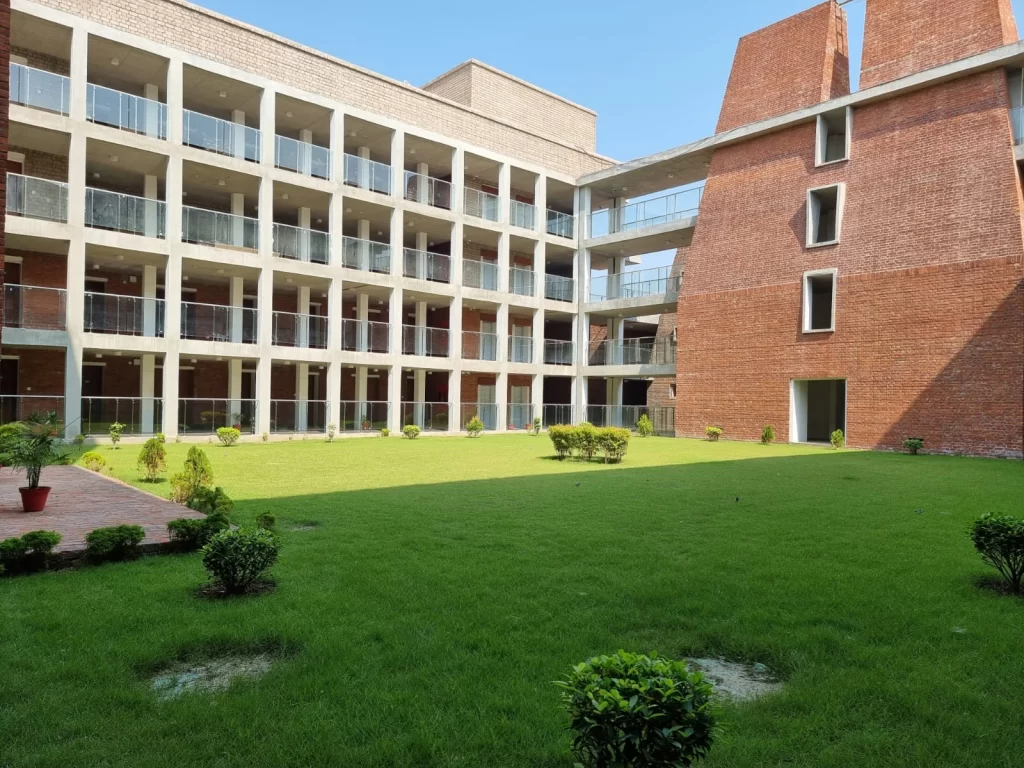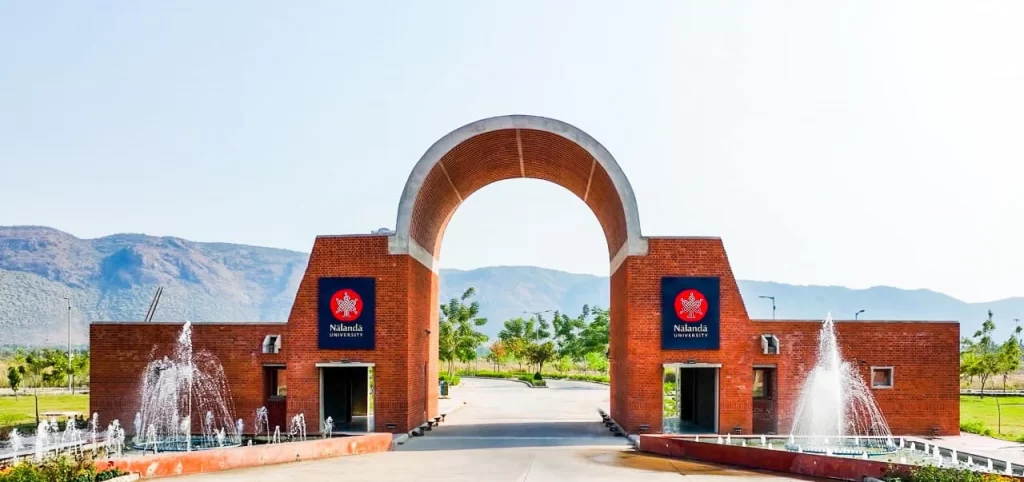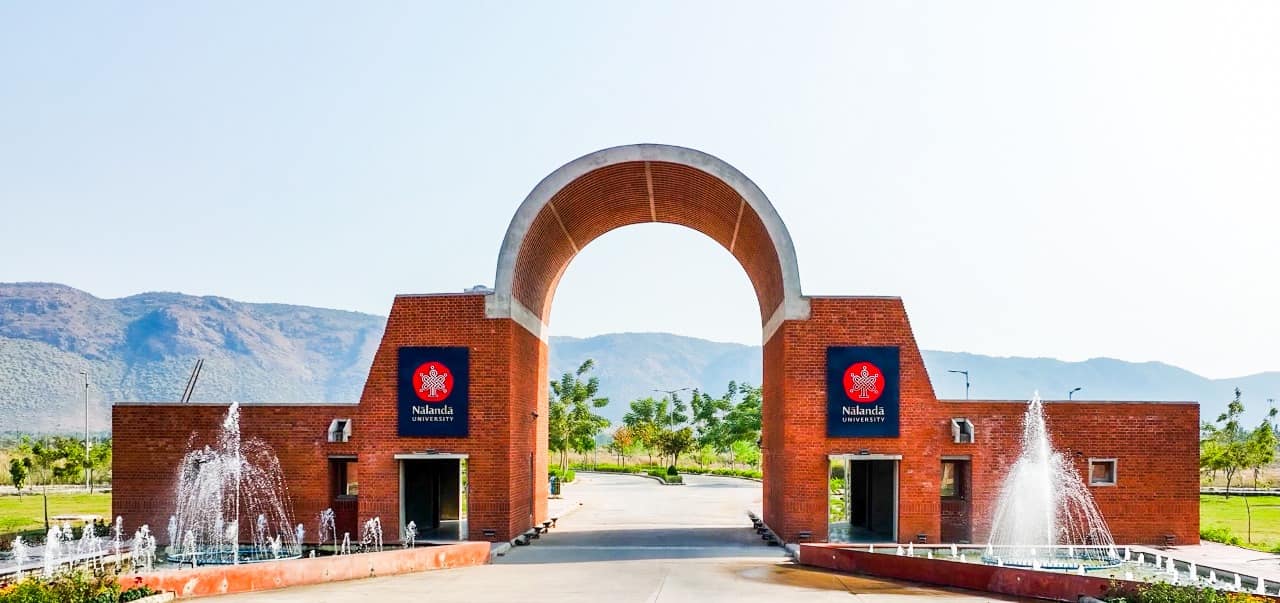Prime Minister Shri Narendra Modi today inaugurated the new campus of the Nalanda University near Rajgir, Bihar. On this occasion, he also planted a sapling of the Bodhi tree- an enduring symbol of Buddhist heritage and Indian spirituality, at the campus.
The modern Nalanda University (NU) at Rajgir is located close to the site of the ancient ruins of Nalanda, and was established by an Act of the Parliament of India. The University aims to revive the ancient glory of the historic Nalanda as an international institution for pursuit of intellectual, philosophical, historical, and spiritual studies. The Nalanda University Act provides the basis for implementing the decisions arrived at the 2nd East Asia Summit (EAS) (Philippines, 2007) for establishment of NU and at the 4th East Asia Summit (Thailand, 2009). While the Nalanda University Act was passed by Parliament in 2010, the real impetus for the construction of the project came under the direction of Prime Minister Shri Narendra Modi with the construction of the present project beginning in 2017. The University adds meaning to India’s ‘Act East’ Policy.

Along with India, there are 17 Participating Countries in this endeavour – Australia, Bangladesh, Bhutan, Brunei Darussalam, Cambodia, China, Indonesia, Laos, Mauritius, Myanmar, New Zealand, Portugal, Singapore, South Korea, Sri Lanka, Thailand, and Vietnam. Ambassadors of these countries travelled to Nalanda to participate in the inaugural ceremony.
The design and architectural elements of the new 455-acre campus are inspired by the original monasteries and buildings at the ancient Nalanda Mahavihara. The new campus is also a ‘Net Zero Green Campus’ and includes over 100 acres of water bodies (Kamal Sagar ponds), an on-grid solar plant, a domestic and drinking water treatment plant, and a water recycling plant for reusing wastewater as well as over 100 acres of green cover. The University also has a 250-capacity Yoga Center, a state-of -the-art auditorium, library, an archival centre and a fully equipped sports complex.
The University places emphasis on higher education and research, and offers Post Graduate and Doctoral programs in Buddhist studies, philosophy & comparative religions; languages and literature; ecology and environmental studies; sustainable development and environment; and, international relations and peace studies. At present, students from over 20 countries, including India, are enrolled in various courses at the University.

Here’s all you need to know about the ‘University of Future’:
- Located at a mere 12 km from the ruins of Nalanda, the new campus of the University has been taking shape over the last four years in Rajgir — a town that is over a 100 km from Patna.
- The campus is spread over 455 acres, and is complete with academic and administrative blocks, teachers and students’ living quarters, laboratories and libraries.
- The University can accommodate about 7,500 teachers and students, enrolled in six schools such as Historical Studies, Ecology and Environmental Studies, Buddhist Studies, Philosophy and Comparative Religion, Languages and Literature/ Humanities, Management Studies and International Relations.
- According to University officials, the new campus, designed by Vastu Shilpa Consultants, has deliberately used only eight per cent of the total area for building construction to “match the architectural and geographical setting the ancient Nalanda University would have provided”.
- Special features of the new campus: The University has open rooms as study centres, “bottle-shaped” bazaars, and consists of a shopping arcades for students. It is a no-vehicle zone, with visitors, students and faculty having to walk or use bicycles within the campus.
- While the official cost of the entire project was not revealed by the officials, as of August 2016, India had contributed Rs 684.74 crore, and China and Australia had contributed $1 million each, besides contributions from Thailand and Laos.

Architecture of the University
- A signature image of the Nalanda ruins – the iconic exposed brick architecture – has found its replica in the Administrative Block or the Wing-1 building that has the VC’s office along with other offices.
- The main wall of the University is made up of two parallel walls with a cavity in the middle that works to trap heat. The University also has a plan to use the heat emitted from air-conditioners to generate warm water in bathrooms.
- The academic spine, which will house all schools and centres of study, are open rooms resembling the cells of students at Nalanda Mahavihara. These rooms will potentially be used as study spaces by students.
- The centre of the campus will feature the Kamal Sagar (lotus pond), on one side of which will feature a horizontal chain of arcades or “bottle-shaped bazaars” where students can shop for everything from stationery to eatables.
What is Nalanda Mahavihara?
- The new campus focuses on retaining the cultural and architectural ethos of Nalanda Mahavihara, the 5th-12th Century AD university that is considered to be one of the greatest centres of learning in ancient India.
- The ruins of ancient Nalanda University in Bihar was declared as the World Cultural Heritage by UNESCO in 2016.
- Nalanda Mahavihara’s multidisciplinary tradition involved lessons in mathematics, astronomy, grammar, logic and defence studies at a time when the concept of a university was almost unheard of.
- It is said to have a 1:8 teacher-student ratio, with about 2,000 teachers for about 10,000 students. This ratio will continue to be maintained in the new campus setting.










